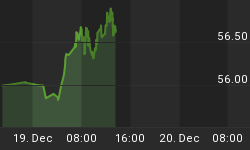Below is an excerpt from a commentary originally posted at www.speculative-investor.com on 13th April 2014.
On the US monetary inflation front, the news is that there isn't much in the way of news. As depicted below, the year-over-year rate of TMS (True Money Supply) growth hit a 5-year low of around 7% at the end of last year and has since edged a little higher.

There are only two ways that money can be added to the US money supply. The first is via Fed asset monetisation, which is how most new US dollars have come into existence since September of 2008 and how almost all new US dollars came into existence last year. The second is via commercial-bank credit expansion. This is how almost all new US dollars came into existence for decades prior to September of 2008.
The Fed began to reduce the rate at which it creates new dollars a few months ago and plans to turn off its 'money pump' before the end of this year. We think that by July-August of this year the Fed will be sufficiently worried about how the stock market and the economy are faring to prematurely end its "QE tapering", but in the meantime there will be a further scaling-down of the Fed's so-called "monetary accommodation". This suggests that the US monetary inflation rate will drop below last December's multi-year low within the next three months unless the commercial banks ramp-up the rate at which they lend new money into existence or monetise securities.
The up-tick at the end of the following chart (the chart shows the year-over-year rate of growth in US commercial bank credit) indicates that US-based commercial banks collectively boosted their rate of credit expansion during the first quarter of this year. Note, though, that during the 50 years prior to 2008 the rate of growth in commercial bank credit was never significantly lower than it is right now. In other words, the recent bounce is a bounce from an extremely low level to a level that is, by historical standards, still very low.

Is it likely that US commercial banks will increase the rate at which they expand credit by enough to fully offset the reduced rate of the Fed's money-pumping?
Before answering the above question we'll reiterate a point we've made in previous commentaries over the years, which is that if the commercial banks do begin to expand credit at a faster pace it won't be due to their huge quantity of excess reserves. The reason is that there isn't now, nor has there been for at least the past four decades, any relationship between US bank lending and US bank reserves. (Hopefully, the writers of economics textbooks will figure this out within the next couple of decades and remove references to the fictitious "money multiplier").
Whether or not the US banking industry expands credit is determined by its collective balance sheet, risk aversion, and ability to find borrowers that are both willing and qualified. The quantity of reserves doesn't come into it. Consequently, just as having almost no reserves didn't prevent the commercial banks from massively expanding credit during 1995-2007, having massive excess reserves has not prompted the banks to become aggressive credit-creators over the past five years and will not cause the banks to ramp-up the pace of their credit expansion in the future.
So, a bet that the commercial banks are about to increase the pace at which they expand credit is a bet that they a) have sufficient balance-sheet strength to support greater leverage, b) are about to become less risk averse, and c) will soon be presented with a growing pool of borrowers that are both willing and qualified. This is not a bet that we would currently make. Our best guess, therefore, is that the US monetary inflation rate will gradually work its way lower until the Fed reverses course.
We aren't offering a free trial subscription at this time, but free samples of our work (excerpts from our regular commentaries) can be viewed at: http://www.speculative-investor.com/new/freesamples.html















